Day Trip from Paris
The White House Le Corbusier Built
I am not a great fan of art museums – mainly because I have hardly ever learned anything from looking at a picture on a museum wall that I had not already learned from looking at a good reproduction in a book.
Architecture, however, is a totally different story.
Before my first visit to Barcelona, I was totally unaware that the Sagrada Familia was (at the time) nothing more than an empty shell (and one that was left unfinished to boot).
And no number of pictures of the Eiffel Tower – I know there are a few of them around – can prepare you for the feeling of standing under its enormous span of filigree weightlessness.
Which is to say: if you are in Paris and have any interest in finding out why the modern world looks the way it looks, go to see the Eiffel Tower.
After that, to the Villa Savoye, his early masterpiece, which you can find along a Paris hiking trail in the suburb of Poissy, a short RER train ride away from the Etoile station on the Champs Elysees.
We discovered the Villa almost accidentally on our hike from Poissy to St Germain. Until then, I had been aware of its existence, but had always assumed it was located somewhere in the Alps. (Savoye, in fact, was the name of the client. Shame on me for my ignorance.)
The Villa Savoye – the white house Le Corbusier built – is conveniently located near Poissy town centre, about a 15 minute walk from the RER station. You can visit the gardens for free, walking around the villa and sizing it up from different angles.
You get a good impression of how the building is meant to relate to the landscape, how big it is, how airy and light.
Enter the house through the big black door which is facing the straw sculpture on the far side of the building. They charge €7 a head for admission, which includes a mimeographed leaflet that tells you a little about the history of the building and that reminds you of the famous “five points” of Le Corbusier’s architectural theory.
You can find some pictures of the building in Wikipedia, but no picture of the Villa Savoye can prepare you for the experience of actually seeing it in person.
Now, impressions are subjective, of course, so with this disclaimer and for what it’s worth, I am going to let you in on mine: I was surprised how, well, grubby the whole place was.
To begin with, most walls of the house are white. Now white is a tricky colour for most things as anybody who has ever worn a white shirt to a party can probably attest.
The good thing about white is that it looks great in its pristine state – on pictures, for example, where the Villa Savoye positively gleams in the sun.
The bad thing is that no things white are likely to remain in this pristine state for long.
Which applies, of course, also to the Villa Savoye. Most of its walls are indeed slightly smudged or stained. But that’s not all: in many places, the paint is peeling off. (There have been moisture issues ever since construction was completed in 1931.) Doors are fraying.
There are weeds and patches of moss between the pavement stones of the rooftop garden. Le Corbusier loved tiles. He would have tiled the whole house had the owner’s wife not put her foot down and insisted on wooden parquet floors for the bedrooms. But many of those tiles are now cracked.
Which makes much of the house look like a urinal which has seen better days.
We must not forget that it is a building run by the French Heritage Foundation. Imagine what it would look like if it were still inhabited by people who do not have an army of cleaners, craftsmen and conservationists at their disposal.
Another thing: the rooms are surprisingly small. Seen from the outside, it appears that the house has a large floor space, but the bedrooms are tiny.
On top of that, you have to account for the fact that they are empty of furniture: even with no more than a bed inside, there would have been hardly enough room in any of the single bedrooms to swing un chat.
In one phrase: Le Corbusier’s theories work great in theory, but perhaps less well in practice (much like one or two other 20th century theories).
Life is a messy business, and people are people. The great modernist’s grand vision was probably too grand to make any allowance for that.
The Villa Savoye, the white house Le Corbusier built, is located inside a walled garden at the corner of Avenue Blanche de Castille and Rue de Villiers in the Parisian suburb of Poissy.
I will give you more details next week when I tell you about the walk from Poissy to St Germain en Laye.



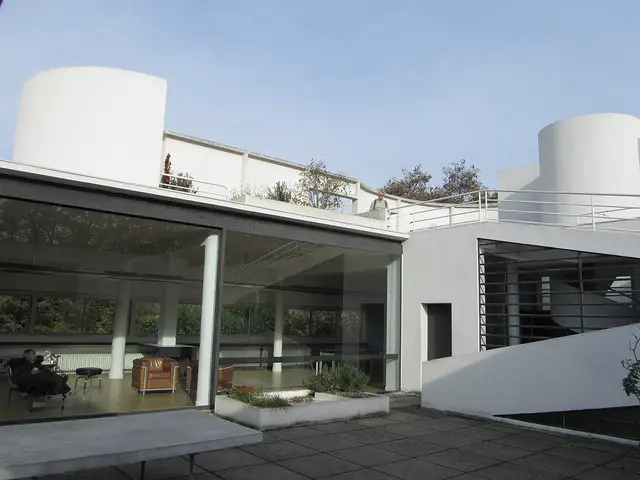

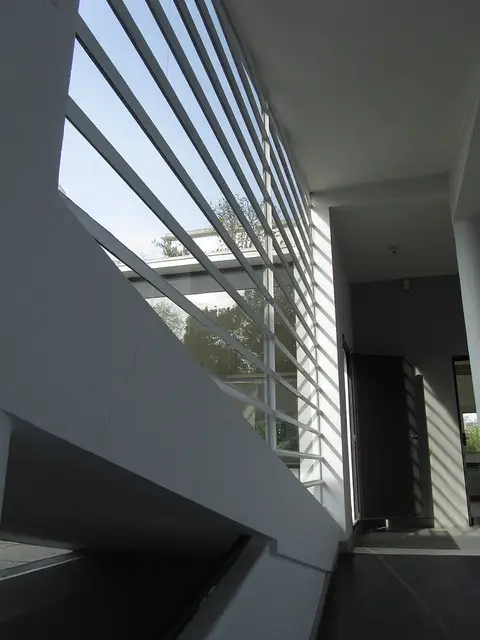
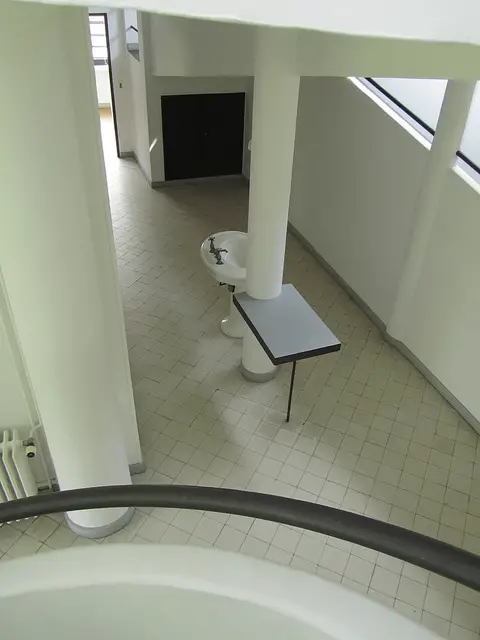
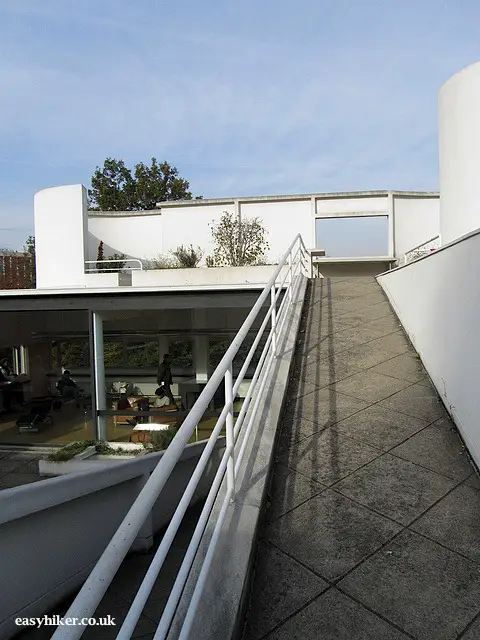
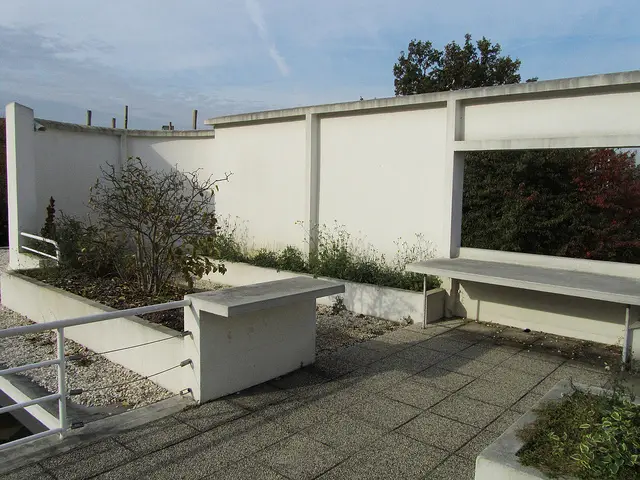

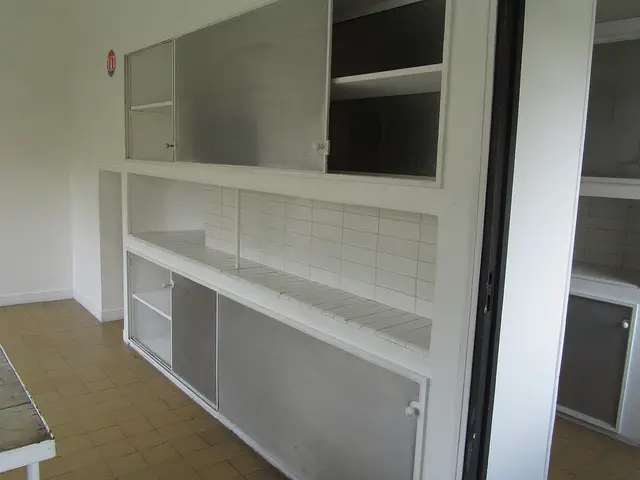
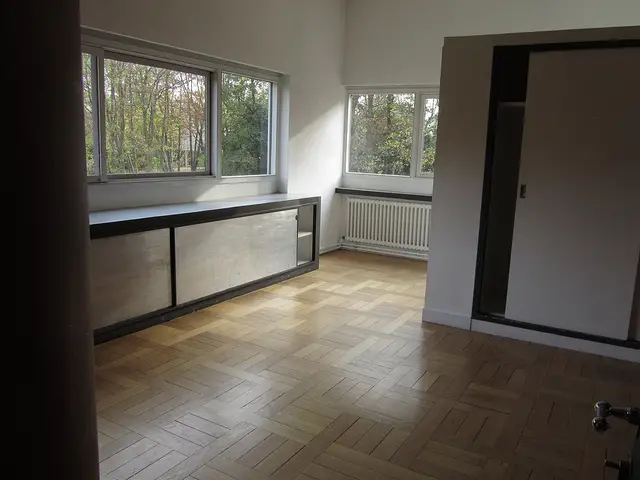

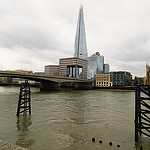

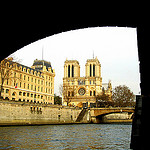
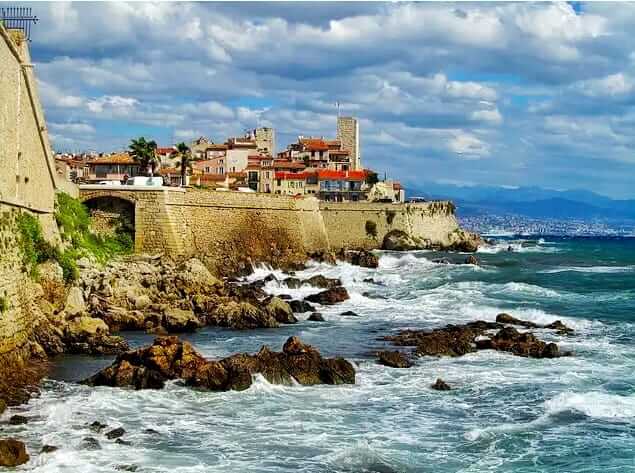
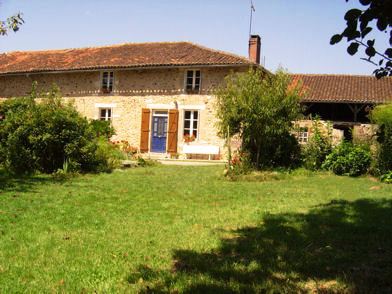
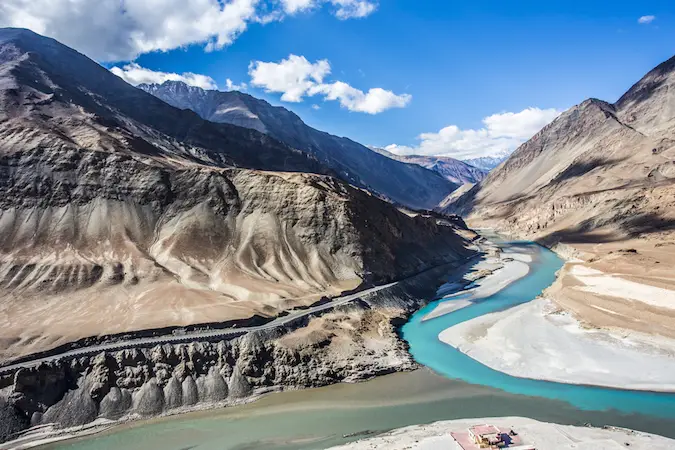
I totally agree, Russ. Really a pity that they let it go to rot slowly. They should maintain it to its white self at least.
I was so excited to visit this site, but left feeling deflated. It was a cold,grey day and the building looked and smelt neglected. Not sure why FH won’t rectify the structural problems to preserve this iconic building, our friendly guide said, ‘The building is what it is, and using 21C techniques would destroy the authenticity of the site’. Not sure I agree as it’s the design and concept we’re enjoying, not the concrete mix (I can hear the sharp intakes of breath from here!).
You hit the nail on the head when you say it looks like a neglected urinal.
I so wanted to get my hands into the roof garden and sort it out. The guide wouldn’t even let me weed out the buddlejas!
Great post. Great pics. Thank you.
I have to admit that I totally cringed when I read your first sentence – I’m currently working on my MA in art history and have had many a debate over reproductions vs seeing paintings in person ;-) BUT I completely agree with experiencing architecture in person (think the same idea applies to sculpture as well).
Have yet to visit a Le Corbusier building in person but really want to! It’s a shame to see Villa Savoye not in tip top shape, considering what an iconic building it is. Great post!
Tres interesting!
If people who live in glass houses shouldn’t throw stones, maybe people who build white houses should beware of turning them into museums. It does look like an interesting place, though, and the grubbiness does not show through in most of the photos.
Great tour, Michael. Have to agree, white is not the easiest of colors to impress with. One smudge, and that’s it!
I wonder what the €7 a head goes towards if it’s not to maintain the building. Of course they have to pay the person collecting your money, but still. Personally I would take that bathtub in a heart beat, but don’t blame the wife for wanting a little wood to break up all the tile. I would need a little wood flooring in my life too.
Hahaha, I totally agree, Lisa. A white house is not fun for parents, for kids, yes.
Very interesting architecture but I’m not a huge fan of white – probably for the reason that you raised – my kids would grubby a white house in no time flat!
I agree that pictures just don’t seem to do most things justice, at least mine don’t! Very interesting find although I’m not sure I am a fan of this type of architecture. Give me a good Medieval or Baroque building and I’m happy :)
I’m with you, give me architecture over museums any time of the day. Even though… I have to say, that I was really impressed with some huge Monets I saw in the Muesee d’Orsay in Paris many years ago. That villa is not my thing – neither outside nor inside. Don’t really know why.
I want that bath tub–complete with the view. Famous architects frequently built places that would have been difficult to live in. Frank Lloyd Wright’s houses are notorious for falling apart and having no space. They fancied themselves artistes, I guess.
You obviously are quite knowledgeable about architecture and that made this that much more enjoyable. But I get the same feeling from standing in front of an artist’s painting and seeing the brushstrokes and a bit of the magic that went into making the overall image. Mone’s Water Lilies in the Orangerie, for instance cannot be replicated in photographs.
But it looks very sterile while being everything in white..
that staircase is intense! ha- I personally love all the white.
Nice shots of a most interesting place. Hate to admit I’d never heard of it before. I love TPThursday for helping open up the world that I might not reach in this lifetime.
Beautiful house, I love it :)
I love nice buildings also, but I love them better if they have a “lived-in” look. This one seems to need a lot of TLC!
Very interesting – I do find how people do the inside of buildings sometimes crazy – nice shots – I love architecture
Your photos capture the beauty of Le Corbusier. I tend to agree with the above commentors though, it needs a bit of tender loving care. Greeting you as we make our rounds on the Carnival of Cities.
Always thought Le Corbusier was a bit … austere, is perhaps the world I’m looking for. But then he was Swiss :)
I agree with Leigh on this. Very beautiful on the outside but needs a little renovating. :)
I’ve seen outside photographs of this place but never the inside. Very interesting.Looks like it needs a little TLC.